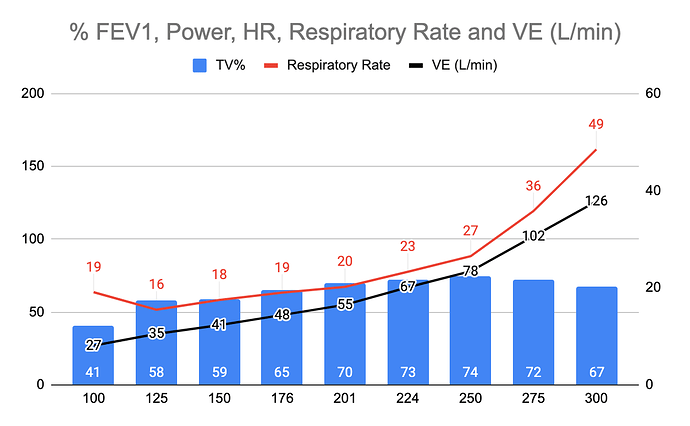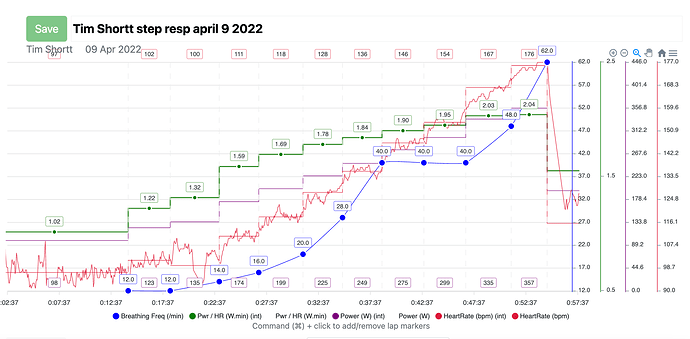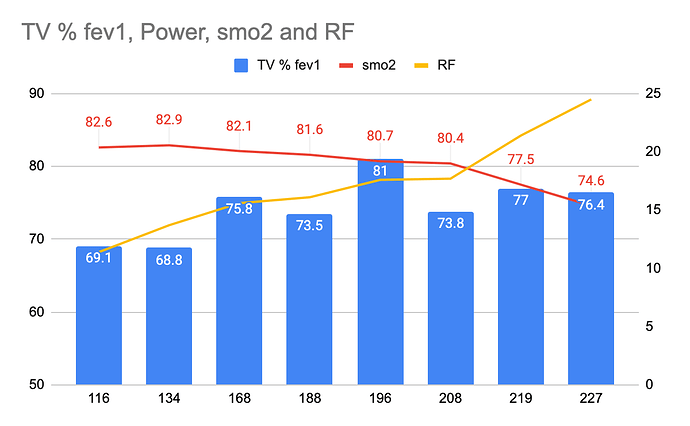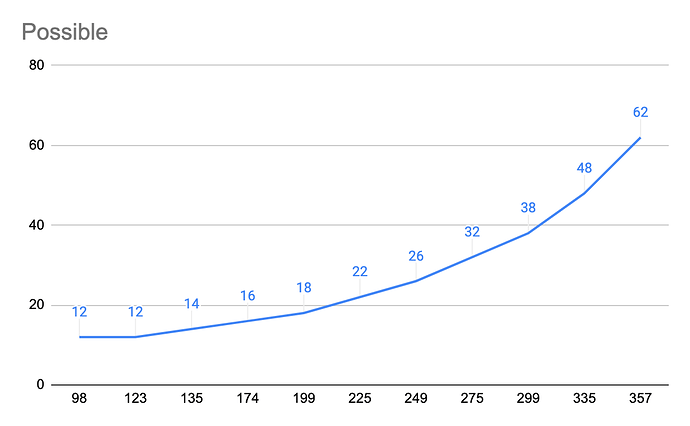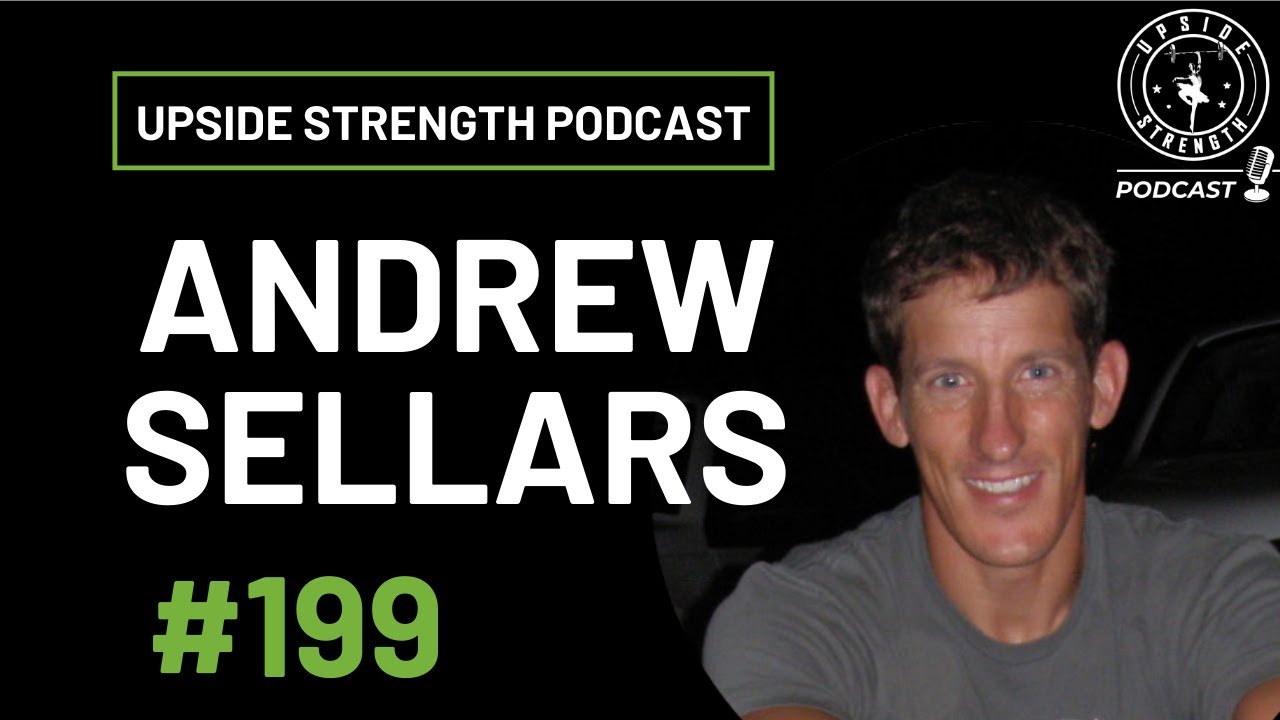Clarification
See down-thread for data/ride that Steve commented on. I posted this and via private msg Steve suggested that I do the step test starting at 100w and taking it to 350w, so his comments are about that set of data, not the one in this post.
Original post (with questions, etc)
I’d like to learn a bit more about how I can incorporate breath count into my training (be it warming up, as a training cue, etc.)
I’ll start with specific questions and maybe this will evolve:
| Stages (mins) | HR | Power | Respiration Rate | Pw:HR |
|---|---|---|---|---|
| 10 - 14 | 97 | 125 | 12 | 1.28 |
| 14 - 18 | 103 | 150 | 12 | 1.45 |
| 18 - 22 | 112 | 175 | 14 | 1.56 |
| 22 - 26 | 117 | 200 | 16 | 1.71 |
| 26 - 30 | 126 | 225 | 18 | 1.78 |
| 30 - 34 | 135 | 250 | 28 | 1.85 |
| 34 - 38 | 147 | 275 | 40 | 1.87 |
| 38 - 42 | 155 | 300 | 48 | 1.93 |
| 42 - 46 | 165 | 325 | 48 | 1.97 |
(Date of ride: April 7 2022)
This is a table I created based on input/suggestion from @steveneal a while ago.
- An interesting point happens from 18-28 Respiration Rate. That’s the first big jump. What does that tell me? How can use that in my training?
- I only went to that last step (sub-max). Would it be useful to keep going to failure (in terms of breath count…of course it is useful to go to task failure for other reasons). What more could it tell me?
- Under Pw:HR, any significance to 1.85 to 1.87? Or is this just me finding a pattern that doesn’t mean anything. Humans are particularly good/guilty of this. LOL
For reference, my bike maxHR is generally 180bpm. My LTHR is somewhere around 161-165. <–From Friel 30-min all out protocol and informally confirmed over the years with “NP over one hour efforts”. Just trying to provide context and more data.
Also, I’m intentionally staying away from terms like VT1 and VT2 because bringing those protocol specific (often lab-based) terms often make the conversation go sideways. I have certainly been guilty of this in the past, as this stuff interests me (like a lot of us). I really want some actionable input for this, though.

